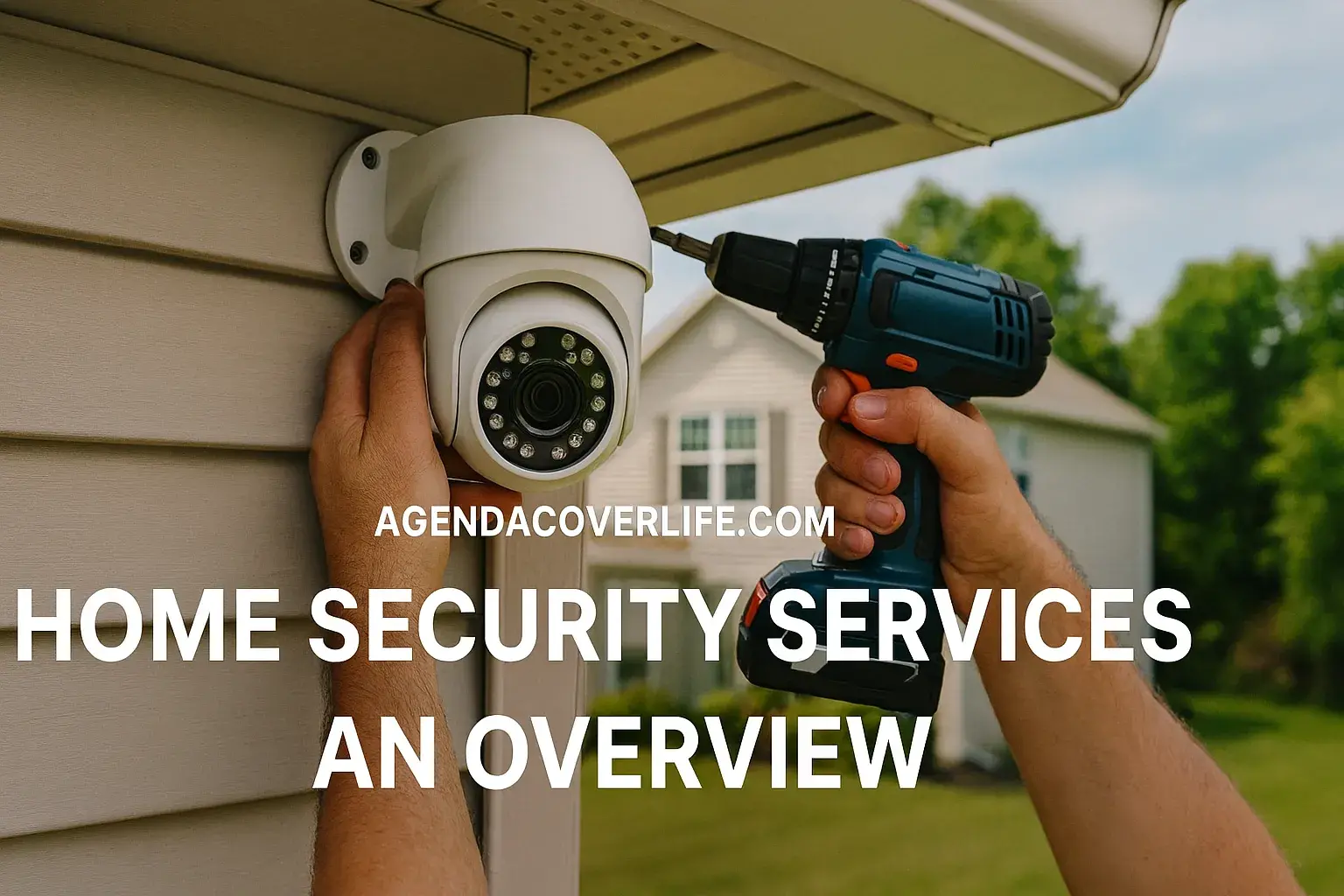Best Camera for Home Security
Choosing the best camera for home security in 2025 involves balancing features, cost, and ease of use to protect your property effectively. With advancements in smart home technology, security cameras now offer high-resolution video, AI-driven detection, and seamless integration with platforms like Alexa or Google Home. This guide explores top camera options, their key features, and factors to consider when selecting the ideal system for your home, whether you need indoor, outdoor, or subscription-free solutions.
Why Invest in a Home Security Camera?
Home security cameras deter potential intruders, monitor deliveries, and provide peace of mind by allowing you to check on your home remotely. Modern cameras come with features like 1080p or 4K video, night vision, two-way audio, and motion detection with AI to distinguish between people, pets, and vehicles. They range from budget-friendly wireless models to advanced wired systems, catering to apartments, large homes, or off-grid properties. The best camera depends on your specific needs, such as indoor vs. outdoor use, smart home compatibility, or local storage preferences.
Note: Before purchasing, assess your property’s layout and Wi-Fi strength, as most wireless cameras rely on a stable 2.4 GHz network.
Top Home Security Cameras for 2025
Here are five highly recommended cameras for home security, each excelling in different scenarios, based on their features, performance, and user feedback.
1. Best Overall: Wireless Spotlight Camera
This battery-powered camera offers 2K resolution, a built-in spotlight, and AI-driven person detection. Its intuitive app simplifies setup and monitoring, making it ideal for first-time users.
- Features: 2K video, color night vision, 130° field of view, two-way audio, motion zones, Alexa/Google Home integration.
- Cost: Approximately $150 per camera; subscription ($8–$25/month) for cloud storage and advanced AI features.
- Pros: High-quality video, long battery life (up to 6 months), easy installation, broad smart home compatibility.
- Cons: Subscription required for cloud storage, no local storage option without a hub.
- Best For: Homeowners seeking a versatile outdoor camera with smart features.
2. Best Subscription-Free: Solar-Powered Dual-Lens Camera
This solar-powered camera features dual lenses (4K wide-angle, 2K telephoto) and local storage, eliminating subscription costs. Its 360° pan/tilt ensures no blind spots.
- Features: 4K/2K video, solar charging, microSD storage (up to 128GB), AI person/vehicle detection, weatherproof, Alexa/Google support.
- Cost: Around $200 per camera.
- Pros: No recurring fees, high-resolution video, low maintenance with solar power.
- Cons: Higher upfront cost, no professional monitoring option.
- Best For: Users wanting a premium, subscription-free outdoor solution.
3. Best Budget: Indoor/Outdoor Wi-Fi Camera
This affordable camera delivers 2K video and local storage at a fraction of the cost, perfect for budget-conscious users or renters.
- Features: 2K resolution, microSD storage (up to 512GB), motion detection, two-way audio, Alexa/Google compatibility, night vision.
- Cost: Approximately $40 per camera.
- Pros: Low cost, free local storage, easy setup, indoor/outdoor versatility.
- Cons: Limited AI features, app may be less polished than premium brands.
- Best For: Small homes or apartments on a tight budget.
4. Best for Smart Home Integration: Indoor Pan/Tilt Camera
Designed for smart home enthusiasts, this camera integrates seamlessly with Alexa, Google Home, and Apple HomeKit, offering 2K video and mechanical pan/tilt.
- Features: 2K video, 360° pan/90° tilt, AI motion tracking, two-way audio, cloud/local storage, multi-platform support.
- Cost: Around $50 per camera; optional subscription ($3–$10/month).
- Pros: Wide compatibility, affordable, full-room coverage.
- Cons: Cloud storage requires subscription, no outdoor use.
- Best For: Indoor monitoring with smart home ecosystems.
5. Best for Off-Grid: 4G Cellular Camera
This camera uses 4G LTE and solar power for remote locations without Wi-Fi, delivering 4K video and AI tracking.
- Features: 4K resolution, 360° coverage, solar/4G connectivity, local storage, color night vision, AI detection.
- Cost: Approximately $250 per camera.
- Pros: No Wi-Fi needed, high-quality video, ideal for rural areas.
- Cons: High cost, requires SIM card for 4G.
- Best For: Remote properties or off-grid homes.
Comparison of Top Cameras
| Camera | Resolution | Power | Storage | Smart Home | Cost | Subscription |
|---|---|---|---|---|---|---|
| Wireless Spotlight | 2K | Battery | Cloud | Alexa, Google | $150 | Required |
| Solar Dual-Lens | 4K/2K | Solar/Battery | Local | Alexa, Google | $200 | None |
| Wi-Fi Camera | 2K | Plug-in | Local | Alexa, Google | $40 | Optional |
| Pan/Tilt Camera | 2K | Plug-in | Cloud/Local | Alexa, Google, Apple | $50 | Optional |
| 4G Cellular | 4K | Solar/Battery | Local | Alexa, Google | $250 | None |
How to Choose the Best Camera
Selecting the right camera depends on your specific requirements. Consider these factors:
- Purpose: Decide if you need indoor (pets, kids) or outdoor (entryways, driveways) cameras. Outdoor models need weatherproofing (IP65 or higher).
- Resolution: Opt for at least 1080p; 2K or 4K offers clearer details for identifying faces or license plates.
- Power Source: Battery-powered or solar cameras (e.g., Solar Dual-Lens) offer flexibility; plug-in models ensure constant power.
- Storage: Local storage (microSD) avoids subscriptions but risks theft; cloud storage ensures remote access but requires fees.
- Smart Home Compatibility: Choose cameras that work with your existing ecosystem (Alexa, Google, Apple HomeKit).
- Budget: Entry-level cameras cost $30–$50; premium models with AI or 4K video range from $150–$250.
Warning: For wireless cameras, ensure a strong 2.4 GHz Wi-Fi signal at installation sites to avoid connectivity issues.
Installation Tips
Setting up a home security camera is straightforward with these steps:
- Plan Placement: Position cameras at entry points (doors, windows) or high-traffic areas, 8–10 feet high for optimal coverage.
- Check Wi-Fi: Test signal strength for wireless cameras to ensure reliable streaming.
- Secure Mounting: Use included mounts or screws; for outdoor cameras, verify weatherproof seals.
- Configure App: Download the camera’s app to set motion zones, sensitivity, and notifications.
- Test Performance: Check live feeds and motion alerts to confirm angles and functionality.
For wired cameras, consider professional installation if you’re not comfortable with cabling.
Maintenance and Security Tips
- Clean Lenses: Wipe lenses monthly to prevent fogging or debris buildup.
- Update Firmware: Regularly update camera firmware via the app to patch vulnerabilities.
- Monitor Batteries: Check battery levels for wireless cameras or use solar options for low maintenance.
- Secure Network: Use strong Wi-Fi passwords and enable two-factor authentication for camera apps.
- Privacy Zones: Set zones to avoid recording neighbors’ properties or public spaces.
Privacy and Legal Considerations
Security cameras raise privacy concerns, especially outdoors. To stay compliant:
- Inform Others: Notify household members or guests about camera usage.
- Avoid Private Areas: Do not place cameras in bathrooms, bedrooms, or neighbors’ properties.
- Check Local Laws: Research regulations on audio recording and surveillance in your area.
Conclusion
The best camera for home security in 2025 depends on your needs and budget. The Wireless Spotlight Camera offers versatility and smart home integration, while the Solar-Powered Dual-Lens Camera excels for subscription-free outdoor use. Budget-conscious users will appreciate the Wi-Fi Camera’s affordability, and the Pan/Tilt Camera suits smart home enthusiasts. For remote areas, the 4G Cellular Camera provides reliable coverage. By evaluating resolution, power, storage, and compatibility, and following proper installation and maintenance practices, you can select a camera that ensures safety and peace of mind for your home.





